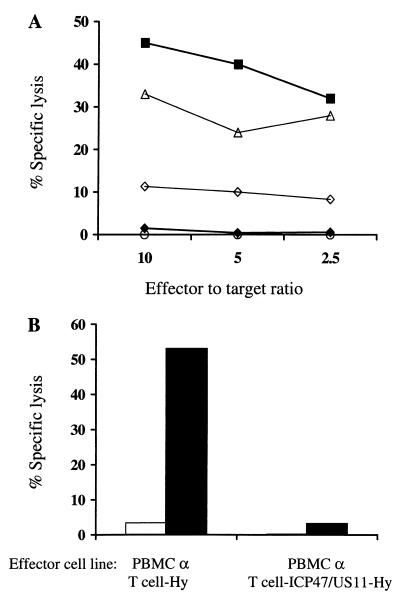FIG. 6.
(A) Class I MHC-low T cells expressing ICP47 and US11 are protected from CTL-mediated lysis. T cells derived from a patient sensitized to Hy after receiving adoptive immunotherapy with HyTK-marked CD8+ HIV-specific CTL were gene modified to express Hy alone (■), Hy and US11 (▵), or Hy and both ICP47 and US11 either unsorted (◊) or sort-purified class I MHC-low (⧫). These cells and parental T cells (○) were evaluated in a chromium release assay as target cells for a CD8+ Hy-specific CTL clone. (B) Class I MHC-low Hy-marked T cells expressing both ICP47 and US11 fail to stimulate Hy-specific memory T-cell responses. Responder PBMC derived from one of the patients immunized against Hy were cocultured for 7 days with irradiated autologous T cells expressing Hy alone or Hy and both ICP47 and US11 and then assayed at various E/T ratios in a chromium release assay for recognition of Hy-expressing T cells (■) and parental T cells (□). T cells expressing ICP47 and US11 fail to stimulate a CTL response to Hy after 7 days of in vitro culture. In contrast, a strong Hy-specific CTL response was elicited when responder PBMC were stimulated with Hy-transduced T cells. Data are shown for an E/T ratio of 5:1.

